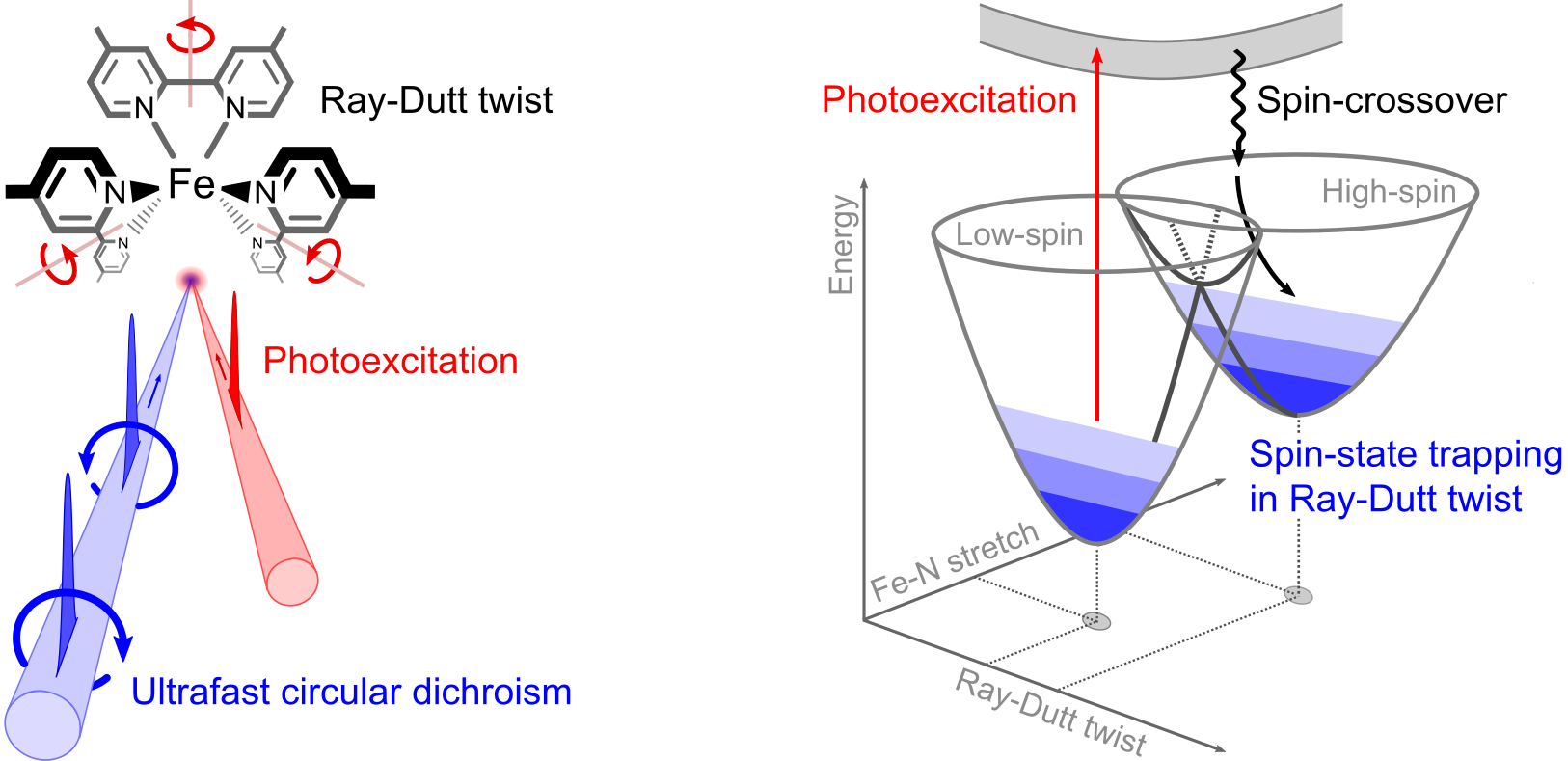Chiral control of spin-crossover dynamics in Fe(II) complexes
Iron(II)-based spin-crossover (SCO) complexes hold tremendous promise as multifunctional switches in molecular devices due to a low-spin (LS) to high-spin (HS) state transition that can be triggered by light, pressure and temperature [1]. However, whilst ultrafast spectroscopy studies have achieved a detailed understanding of the photoinduced forward-SCO to the HS state, the backward-SCO mechanism has remained unresolved – despite its crucial role in governing the technologically relevant lifetime of the HS state. Through ultrafast circular dichroism experiments on a prototypical chiral FeII complex, we now show that the backward-SCO is governed by a symmetry-breaking torsional twist in addition to the well-known symmetric stretch mode of the metal-ligand bonds [2].
To this end, we characterize the back-SCO dynamics of the tris-chelate FeII(4,4’-dimethyl-2,2’-bipyridine)3 in solution, associated for stereocontrol with enantiopure ∆- or Λ-TRISPHAT anions [3]. Combining ultrafast circular dichroism [4] with transient absorption and anisotropy measurements, we find that the HS state decay is accompanied by ultrafast changes of its optical activity, reflecting the coupling to an asymmetric torsional twisting mode known as the Ray-Dutt twist. Quite remarkably, the diastereoselective ion-pairing suppresses the vibrational population of the newly identified reaction coordinate, thereby trapping the HS state in the potential of the Ray-Dutt twist and achieving a four-fold extension of the HS state’s lifetime.
More generally, our results finally provide a complete reaction mechanism for the FeII backward-SCO, which motivates the synthetic control of the involved torsional modes as a complementary route to manipulate the SCO dynamics of FeII complexes.

[2] M. Oppermann, F. Zinna, J. Lacour, M. Chergui, Nat. Chem. (in press), DOI: 10.1038/s41557-022-00933-0
[3] J. Lacour, J. J. Jodry, C. Ginglinger, S. Torche-Haldimann, Angew. Chem. Int. Ed. 1998, 37, 2379
[4] M. Oppermann, B. Bauer, T. C. Rossi, F. Zinna, J. Helbing, J. Lacour, M. Chergui, Optica 2019, 6, 56